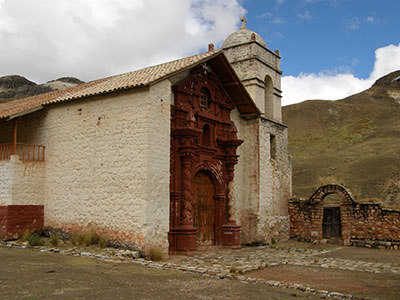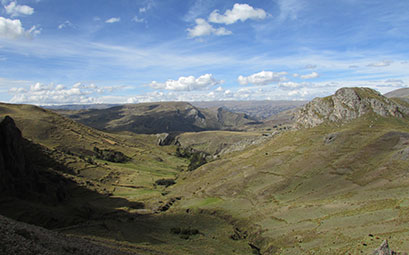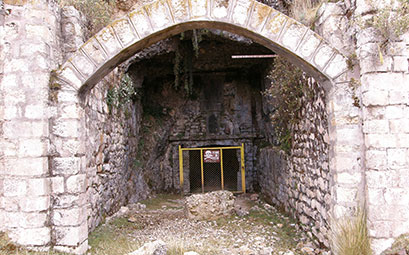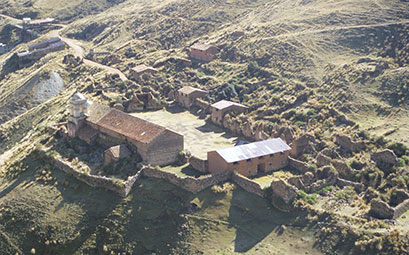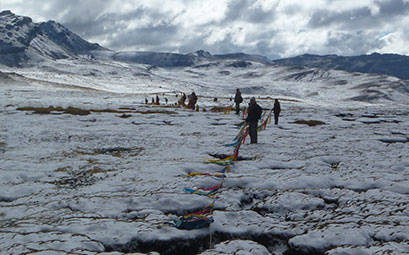Santa Bárbara Archaeological Project
Curatorial Section
Research Discipline
Archaeology
Expand Global Research
Over more than a century, we’ve opened up endless exploration across six continents. New field work endowments will ensure our continued leadership in national and international field research and discovery.
Give NowThe Santa Bárbara Archaeological Project investigates indigenous labor at Huancavelica, the largest mercury mine in the Americas (AD 1564-1810). Spanish colonial adminstrators forced Andean communities to annually rotate one-seventh of their population for mining labor, yet how indigenous peoples experienced and survived this experience is poorly understood. Therefore, this project joins archaeology, colonial archives, and oral histories to understand everyday life at a mine so brutal that it became known as la mina de la muerte, or “the mine of death”.
The Spanish Empire in Colonial Latin America depended on silver, mined by indigenous peoples across Mexico, Peru, and Bolivia. However, silver refining required mercury, a rare mineral with “strange and wonderful” properties that only existed in a few isolated deposits. In 1563, an indigenous leader named Gonzalo Navincopa showed the Spanish a mercury source in the Central Andean highlands, 4300 m above sea level. The subsequent mining boom led to the founding of Huancavelica in 1571, with most of the mercury exported to the Potosi, the largest silver mine in the world. By the end of the 16th century, Huancavelica became the largest mercury mine in Latin America, and was known as “the soul of all the mining towns in the kingdom,” as silver mines could not function without mercury.
The city of Huancavelica and the nearby mine of Santa Bárbara are located in the Peruvian department of Huancavelica, along the Ichu River in the Central Andes highlands. The mining district extends over 30 km² south of the modern city of Huancavelica across high altitude grasslands. The forced labor draft for Andean peoples extended across the Central Highlands, an approximately 65,000 km² from the contemporary Peruvian provinces of Andahuaylas to Tarma.
- Dr. Douglas K. Smit, Project Director, Assistant Adjunct Professor, Department of Anthropology at the University of Pennsylvania; Consulting Scholar at the Penn Museum.
- Licenciado Antonio Coello Rodríguez, Co-Director, Independent.
- Terren K. Proctor, Co-Director, Project Bioarchaeologist, Vanderbilt University.
- Licenciada Rosa María Varillas Palacios, Co-Director, University of Illinois at Chicago.
Our collaborative research has three related goals: (1) Investigate the roles of indigenous Andeans in the colonial mining economy and early globalization, (2) Study how colonial peoples understood and interacted with the dangers of mercury toxicity, and (3) Understand how the colonial past relates to the present for the contemporary Santa Bárbara community.
Indigenous Roles in Colonial Economies
In June 2013, Dr. Smit, Dr. Brian Bauer, Licenciado Coello Rodriguez directed the first systematic archaeological survey of the greater Huancavelica mining district, documenting the remarkable preservation of over 300 colonial-period sites across the region. Several new ceramic types were classified, notably large jars for mercury production that are similar to mercury vessels from late Islamic/early Christian Spain as well as painted indigenous wares likely belonging to a local late prehispanic and early historic tradition. In addition to prehistoric ceramic and lithic scatters, colonial-period settlements were located and mapped across the region, including over thirty 16th century kilns, dozens of isolated colonial homesteads, and hundreds of mining shafts and horizontal passages known as adits.
The largest and best-preserved colonial-period site in the Huancavelica mining district is the central mining camp of Santa Bárbara. Historical research indicates that Santa Bárbara was constructed in the late 16th century and was inhabited by indigenous laborers until the closure of the Huancavelica mercury mine in 1810. Encircling a church and central plaza, this sprawling 16th century complex is located adjacent to the main underground entrance to the colonial mine and covers approximately 12 hectares.
Dr. Smit and Licenciado Coello Rodriguez returned in 2014 to conduct household excavations at Santa Bárbara. Artifact analysis showed that indigenous motifs and production technologies were not survivals from a prehistoric past, but rather emerged toward the end of the late colonial period as Andean peoples increasingly dominated colonial markets. In other words, rather than traditional narratives that describe indigenous laborers as silent victims of an oppressive labor program, the material culture suggests Andean people appropriated Spanish markets to assert their identity and renew communal cohesion destroyed by colonial violence. Moreover, indigenous mercury miners paired communal labor arrangements with the illegal mercury trade to produce spaces of Andean autonomy during the 19th century, offering an alternative trajectory that complicates classic narratives in the history of capitalism.
Mercury Toxicity in the Past
In June 2018, Terren Proctor expanded these excavations with full community support and engagement. The bioarchaeological data will be paired with upcoming bone chemical analysis to understand the role of mercury toxicity on the human body, allowing more in-depth questions on how intersecting forces of age, occupation, class, and gender produced different embodiments of structural violence during the colonial period.
Community Archaeology
This research depends on multimodal collaboration with the community of Santa Bárbara; including traditional techniques such as oral history collection and public lectures, as well as digital methodologies such as Photovoice. The Santa Bárbara community has increasingly encouraged this engagement, as the Peruvian government placed the high-altitude mercury mining landscapes on the UNESCO World Heritage Tentative List in 2017. In 2018, Dr. Smit conducted a successful pilot project using Photovoice, a technique inspired by critical pedagogy that removes research tools, such as the digital camera, from the researcher and places these tools in the hands of community members. People then took photos of what they define as heritage and what they think is important with ongoing dialogues between state, academic, and community stakeholders over the future of Huancavelica heritage amidst the drive for UNESCO status. Subsequent interviews over the content and motivation of different images highlighted the importance of the broader landscapes to community identity, and a desire for heritage discussions to not just present the legacy of colonial exploitation, but also how kinship with sacred places materialized community resurgence and resilience over the past four hundred years. Future research will expand upon the 2018 Photovoice collection to incorporate a more diverse subset of the community across age and gender lines. Additionally, this research will have a Digital Humanities component, as community leaders have asked for their oral histories and photos to be cataloged online to provide access for children and younger generations who have moved to nearby cities.
Blog Post by PhD Student, Samantha Seyler
People Associations
